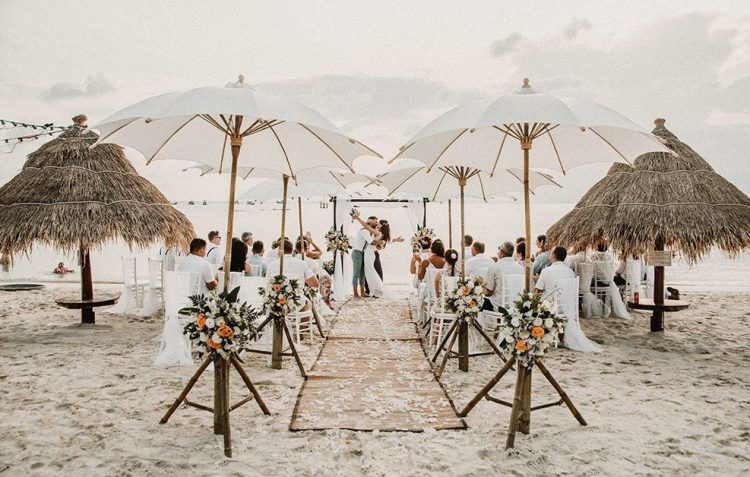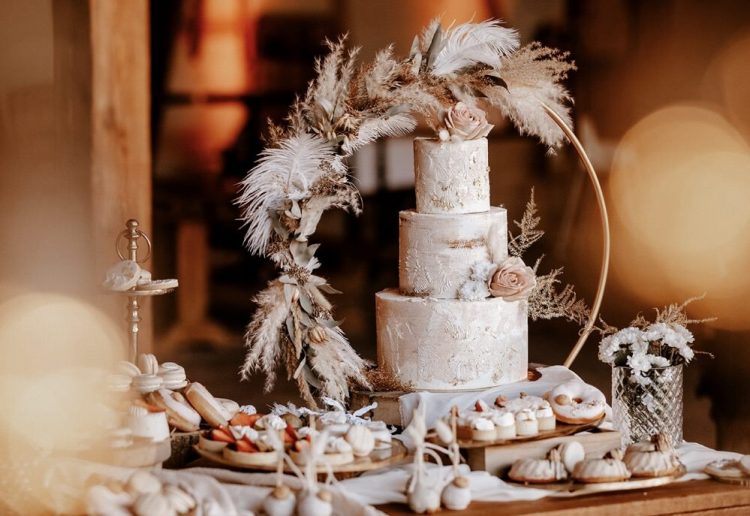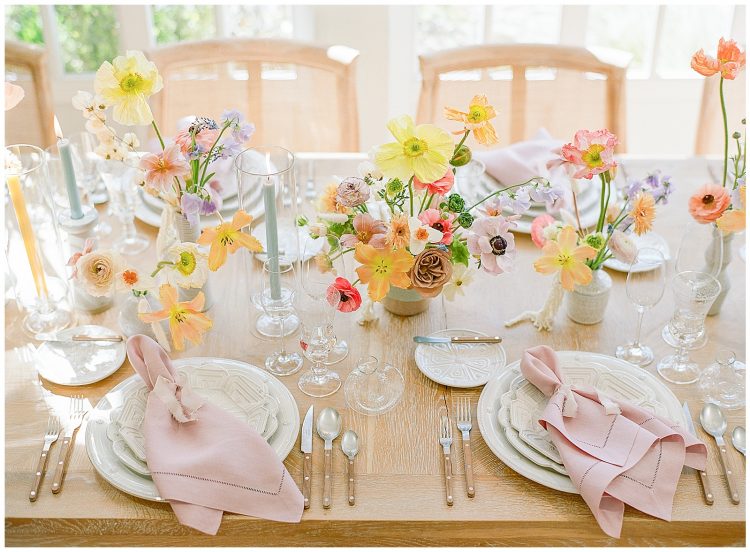Creating your wedding budget for your big day be very daunting. After getting engaged, there can be a mixture of emotions including excitement and joy, but there comes a point where you need to start focusing on the wedding planning process. And of course, that means creating your wedding budget! Your wedding is going to be one of the biggest celebrations in your life and you want it to be memorable, special, and everything you imagined. So, where do you even start? Creating your wedding budget will include discussing the numbers with your partner, staying organized, prioritizing your must-haves, avoiding over paying, and learning how to save along the way.
Your wedding planning adventure begins with setting your budget, so read below for 6 easy steps to creating your wedding budget for your special day.
1. Chat with your partner to agree on a wedding vision and budget
Yay! You’re engaged so let the wedding planning begin! The best place to start when creating your wedding budget is by having an honest conversation with your partner to discuss the vision of your shared wedding day. Where do you want your wedding to be? How many people do you want to be there? Or do you want to elope or have a smaller ceremony? There are so many questions to ask! In terms of your wedding vision, it’s always best to start on the same page from the very beginning so you can hone in on your wedding budget.
Typically, the two main sources to fund your wedding are you and your partner’s savings and whatever is available from your current income. This is considering what is set aside after any bills or debts are paid off such as rent, utilities, student loans, mortgages, etc. Depending on where you and your partner are at financially, this would be a good time to discuss any saving tactics and goals to have the wedding of your dreams!
Next, consider any assistance from your parents or other family members. This is never a guarantee, but there is always the possibility that they might want to contribute to your special day.


2. Track your spend
Tracking your spending will help you stay on top of your wedding budget. Basically, a budgeting spreadsheet will be your best friend as you continue to plan your wedding. The spreadsheet should include columns for estimated costs, actuals, and even gratuities. Keep in mind that your venue and catering are typically the most expensive elements of your wedding, so this will account for a large chunk of your budget. If you’re planning a destination wedding in Italy, this would be a good time to check out our detailed wedding budget breakdown for a 100 guest wedding.
As you begin reaching out to vendors and receive proposals, it’s best to track them right away for easy comparison. Also, as a good rule of thumb, always check if VAT or gratuity is included within your vendor proposals, especially if you’re planning a wedding abroad. If not, consider an average VAT of 15-20% for all of your vendors and track this amount in the spreadsheet.
Moreover, if a spreadsheet seems intimidating to you, consider downloading an application to help you stay on your wedding budget. There are numerous options to choose from such as Wedding Happy and Fudget. Both are helpful to help you stick to your wedding budget and stay on top of payment dates.
3. Prioritize!


Prioritize what is essential to your wedding day. Confirm with your partner what are the must-haves for your wedding ceremony and reception. This should have already been discussed, but it’s also common for priorities to change throughout the planning process! This happens because unexpected costs arise and visions change, so re-prioritizing is part of the budgeting process since your wedding essentials could change as you continue to do more planning. Pro-tip, unexpected costs will arise, so it’s smart to always create a buffer within your wedding budget. Overall, re-prioritizing helps you stick to your wedding budget since it can eliminate vendors and unnecessary costs.
4. Check-in regularly
Wedding planning is a process that averages 12-18 months to plan, so checking in regularly on your wedding budget is an important tip. Keep in mind, this is a little different than tracking your spending since it is easy to list all the vendors and costs. Checking in with yourself and your partner is easily overlooked because as we all know when planning a wedding, there will be numerous moving pieces. For example, are you on top of credit card payments for vendors? Maybe you got some financial help from your family? Did you put down the deposit for the caterer? Instances like this can impact your wedding budget. This tip is more of a reminder to give yourself a checkpoint in the overall process.
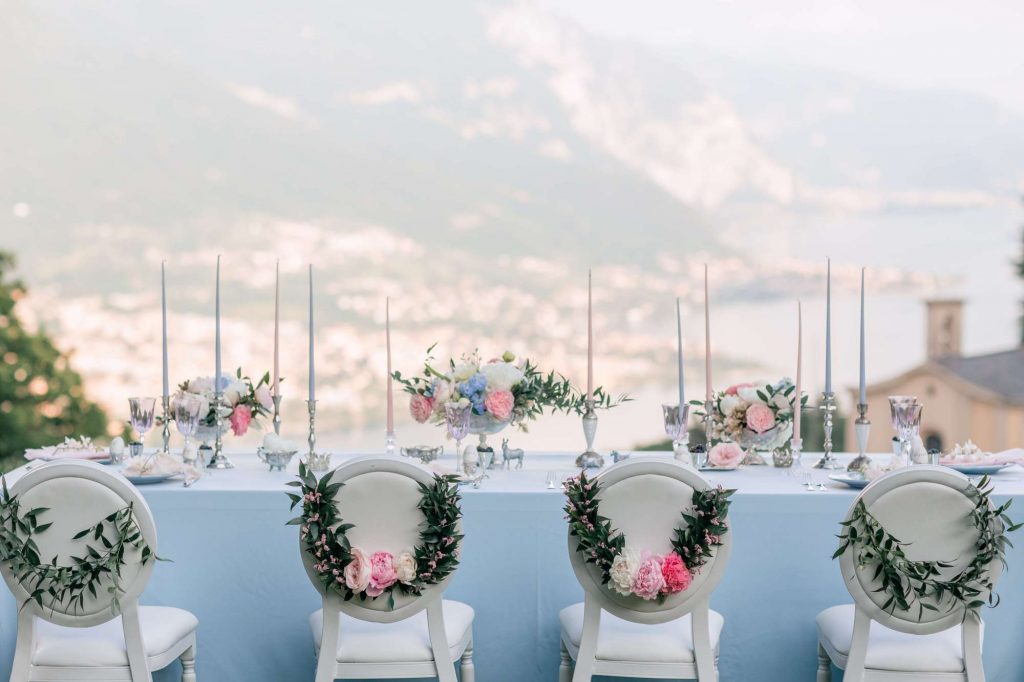

5. Find ways to save
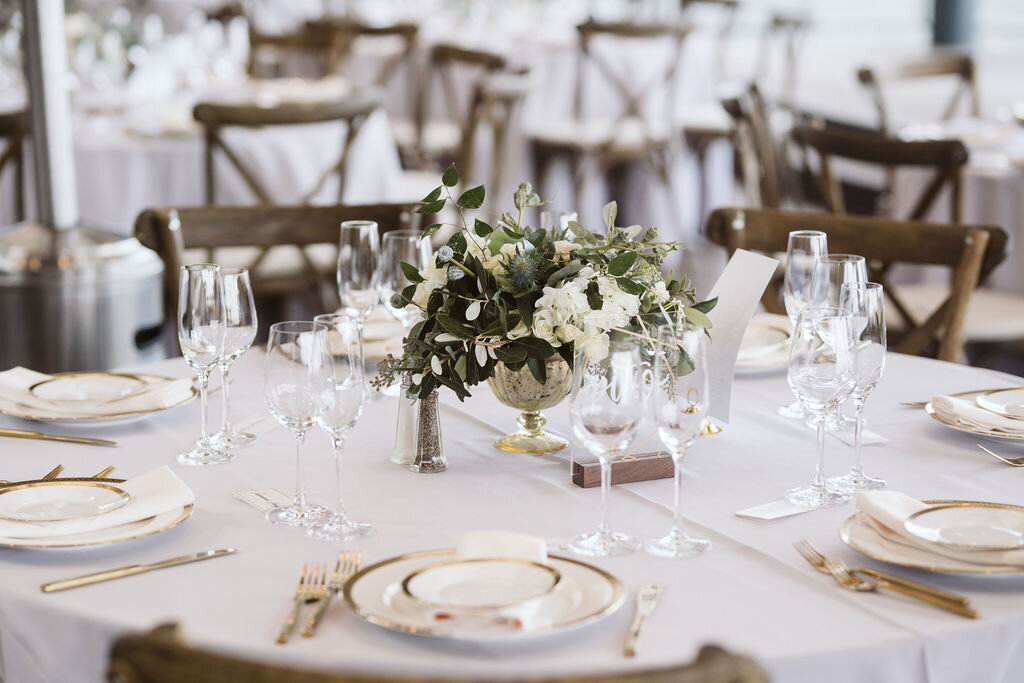

As you go through the wedding planning process, it’s normal to find yourself off the beaten path and going over budget. Don’t worry as this happens often and is just a sign to readjust and find ways to save.
- Reduce the guest list: Reconsidering the number of guests will help you save a lot of money and stay on your wedding budget. Remember, your catering cost is one of the biggest elements of your wedding spend!
- Consider a weekday or off-season wedding: Choosing a weekday for your wedding is an easy way to reduce costs, especially if you’ve already chosen a Friday or Saturday. Also, booking a date during off-season can be another big cost saving!
- Explore vintage shops for your wedding dress: Visit vintage stores or consignment shops for your wedding dress to save money. You’ll be surprised as you can find something really special!
- DIY invitations: Doing your invitations from home can help reduce costs significantly! Ask for help from your bridesmaids. You can even make it a fun evening with some wine and favorite snacks!
- Repurpose florals: Reuse your florals that were part of your ceremony during your reception. You can discuss this with your wedding planner to find different ways to maximize the use of your florals.
- Champagne only: Make it a bubbles-only bar! Or maybe, just beer and wine. Putting some restrictions on what is available at the bar will help keep costs significantly lower. Generally, catering can be one of the most expensive parts of a wedding.
These are just a few suggestions, but are a good starting place. Each can help you get back on track if you see yourself going over your wedding budget.
6. Focus on what matters
This is your wedding day so focus on what’s really important to you and do what makes you happy! Maybe you don’t need the live band or the designer shoes to walk down the aisle. Perhaps instead, it’s more essential to have that breathtaking view of Lake Como when you say “I Do,” or ensure that you have a venue that allows all of your friends and family in attendance. So, whenever you’re unsure if you “need’ this on your wedding day, ask yourself, “Is this important to me? To us?” Then make a decision that you feel good about!


Need more help with budgeting and planning your destination wedding in Italy? Learn more about the costs of a destination wedding in Italy. Also, explore our wedding vendors or get connected with select wedding planners in Italy to learn more about having your special day abroad.
Featured Image: Gabriel Fani Photography



